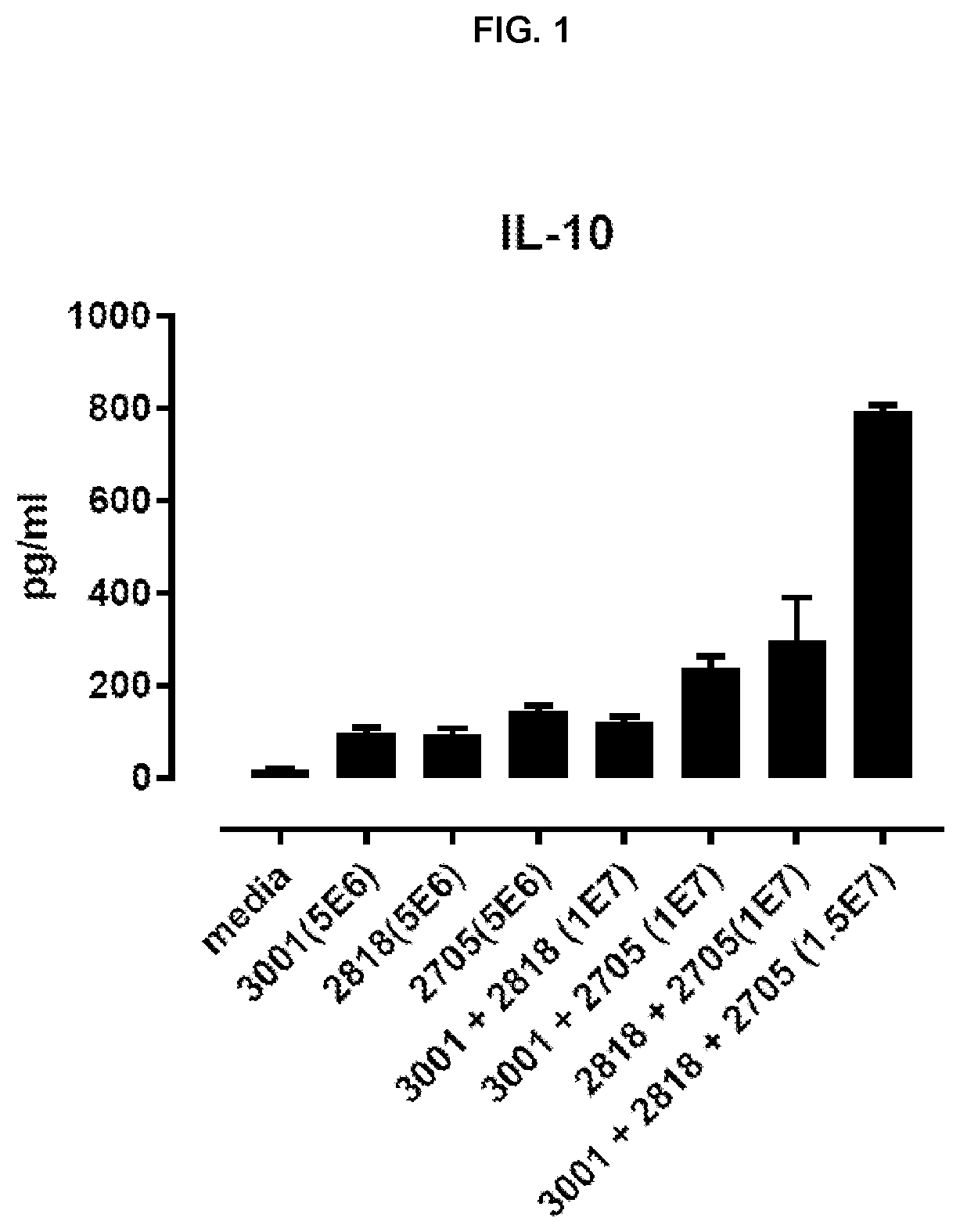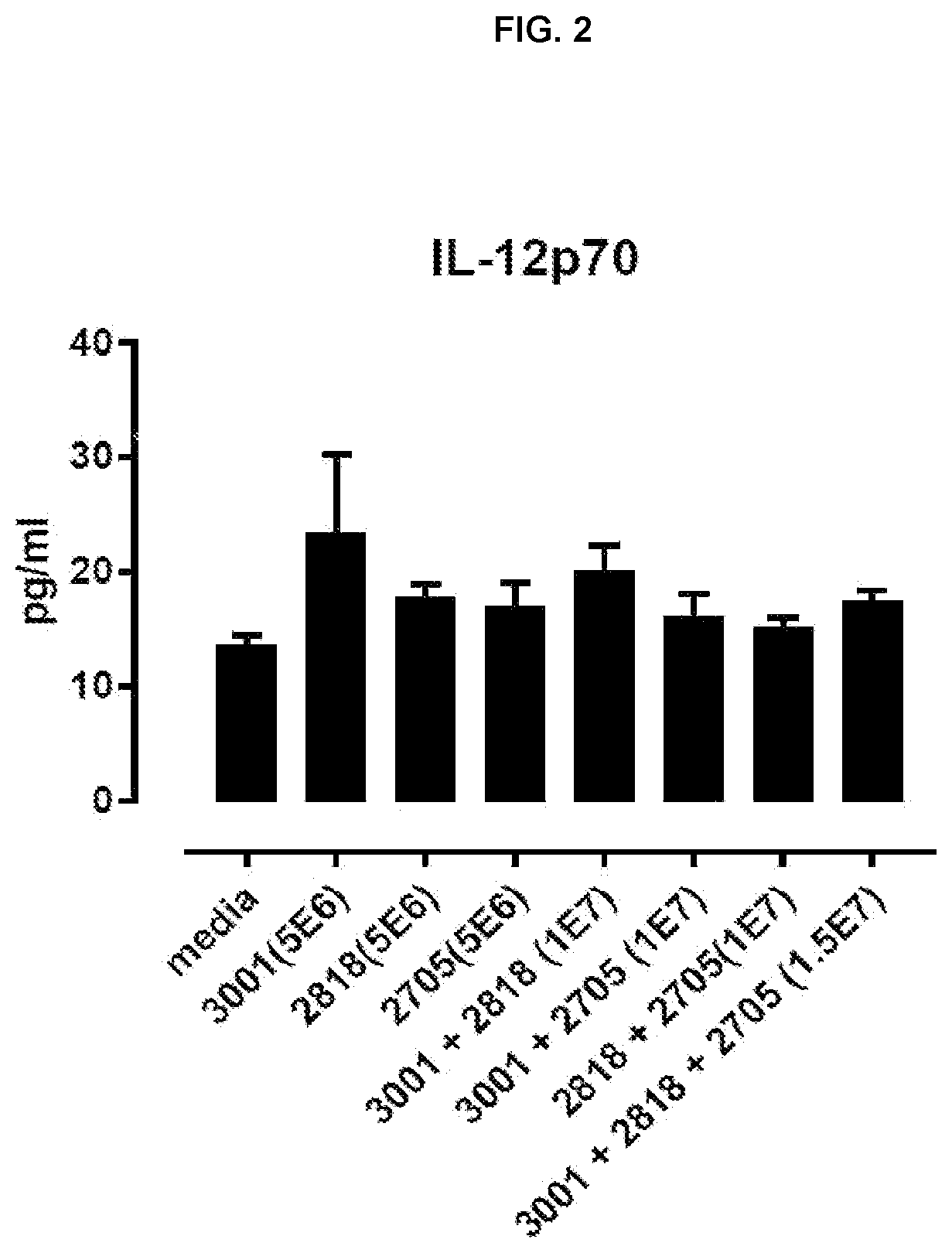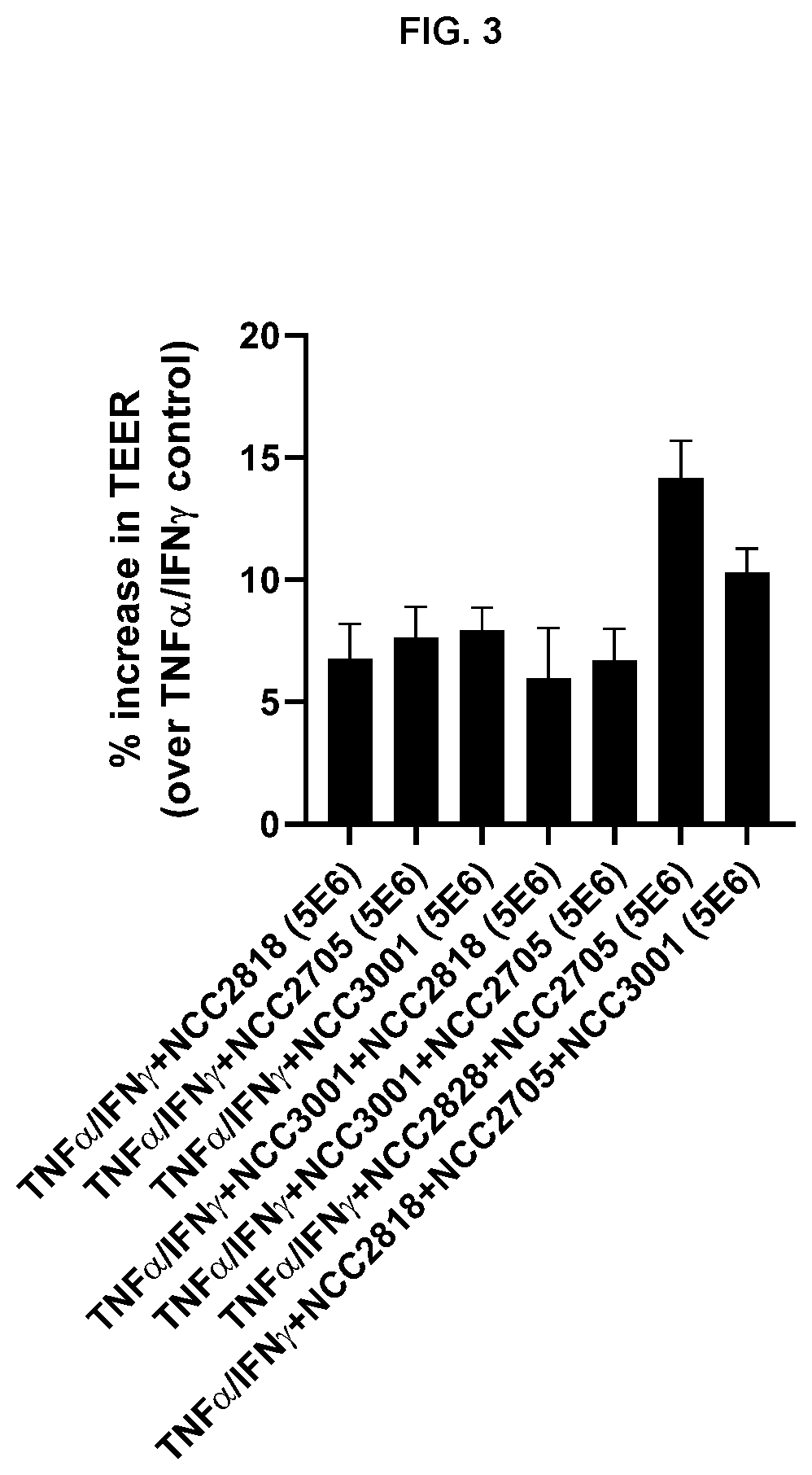Probiotic combination for treatment of inflammatory-related gastrointestinal disorders
a technology for gastrointestinal disorders and probiotics, applied in the field of probiotic combination for treating inflammatory-related gastrointestinal disorders, can solve the problems of poor growth, affecting quality of life, and inability to take up nutrients, so as to prevent inflammation-induced intestinal barrier dysfunction/permeability, increase production or expression, and suppress production or expression.
- Summary
- Abstract
- Description
- Claims
- Application Information
AI Technical Summary
Benefits of technology
Problems solved by technology
Method used
Image
Examples
example
Preparation of Bacteria:
[0130]The day before the assay, three selected bacterial strains from the Nestle Culture Collection NCC 3001, 2818 and 2705 were cultured in 10 ml MRS+cysteine and grown for 16 hrs at 37° C. in anaerobic conditions.
[0131]Bacterial cultures were centrifuged at 5000 rpm 5 min (room temperature). Bacterial pellet were resuspended in cold phosphate buffered saline (PBS) (10 mL). The optical density of each bacterial culture was measured at 600 nm. Adjusted bacteria preparations in RPMI culture medium were set to have 5×106 CFU / ml and 1×107 CFU / ml according to pre-test of bacterial colony forming unit counting on selective agar medium that validated correspondence of OD and CFU.
Preparation of Peripheral Blood Mononuclear Cell (PBMC):
[0132]PBMC isolated from three healthy donors were washed once in PBS. After a centrifugation at 500 g for 5 minutes, the cell pellet was resuspended in 2 ml RPMI+10% fetal calf serum (FCS). Cells were counted and preparations adapted ...
PUM
 Login to View More
Login to View More Abstract
Description
Claims
Application Information
 Login to View More
Login to View More - R&D
- Intellectual Property
- Life Sciences
- Materials
- Tech Scout
- Unparalleled Data Quality
- Higher Quality Content
- 60% Fewer Hallucinations
Browse by: Latest US Patents, China's latest patents, Technical Efficacy Thesaurus, Application Domain, Technology Topic, Popular Technical Reports.
© 2025 PatSnap. All rights reserved.Legal|Privacy policy|Modern Slavery Act Transparency Statement|Sitemap|About US| Contact US: help@patsnap.com



